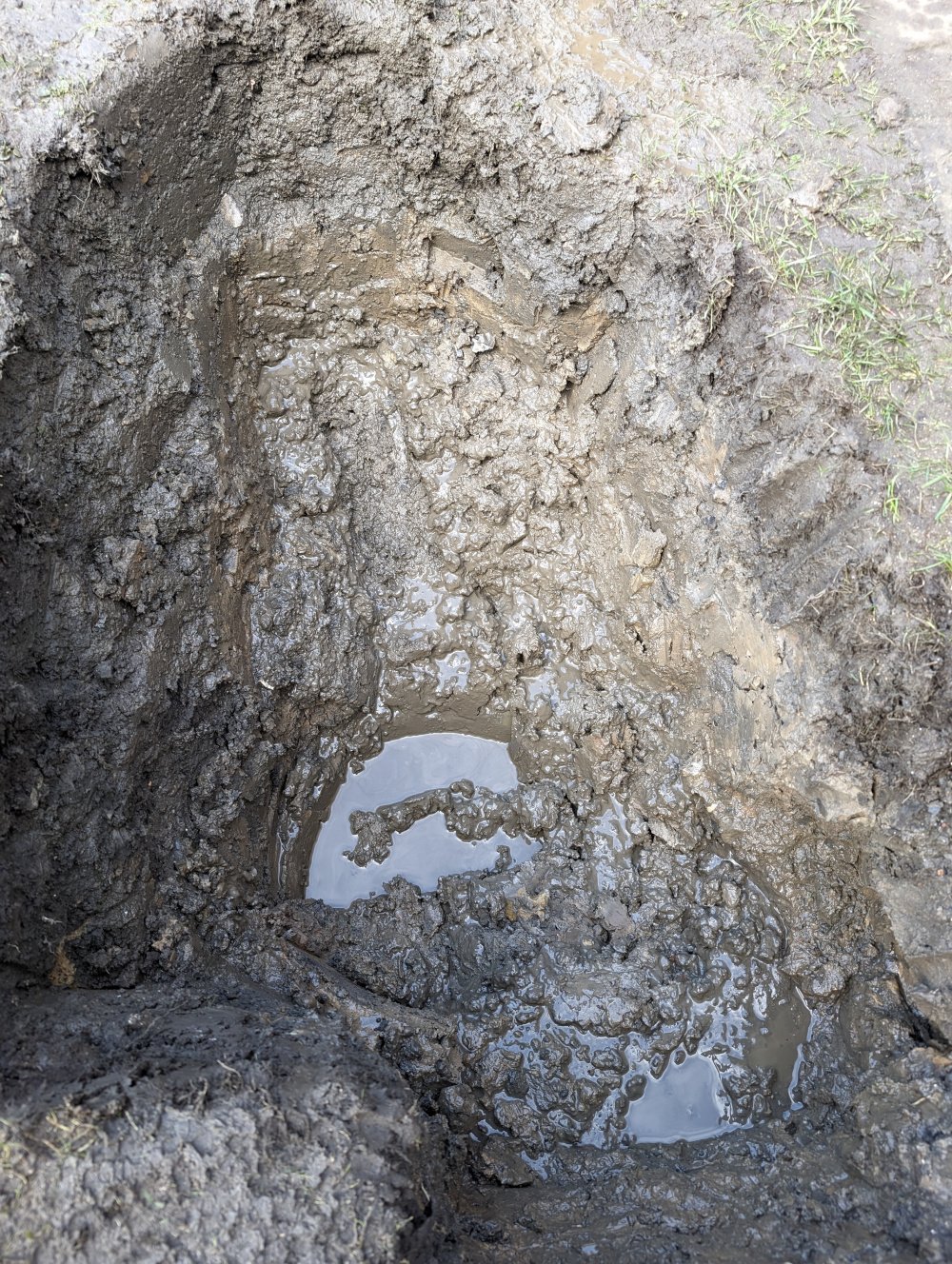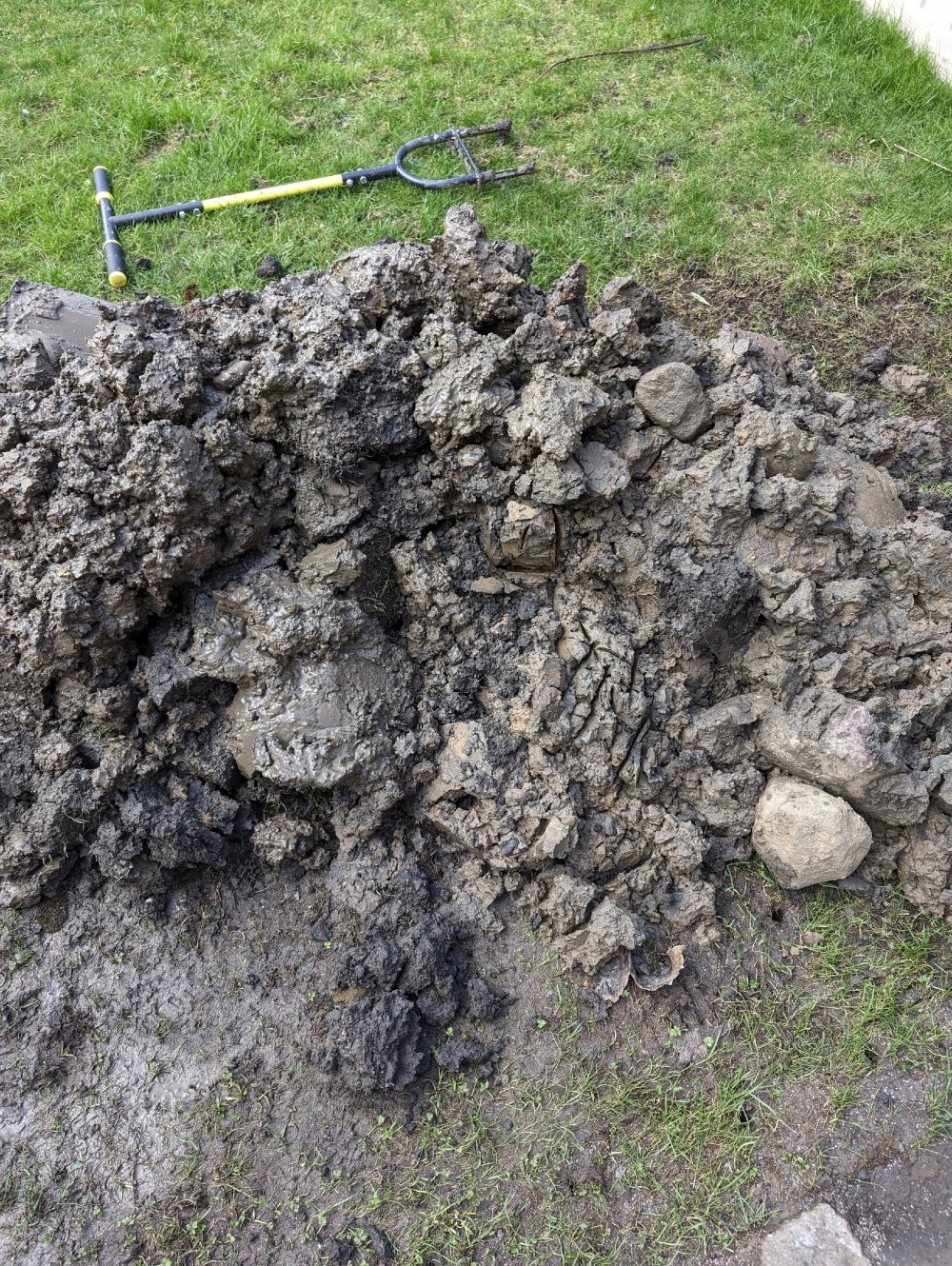This Forum will close on Wednesday 27 March, 2024. Please refer to the announcement on the Discussions page for further detail.
Heavy Clay Soil -Fixing Standing Water Issues
Hi all,
Hoping somebody could offer some advice on how we can solve some standing water we get at the bottom of our garden. I wanted to dig out the area to figure out why this was happening, as it's never occurred in previous years, and turns out we have some very heavy clay soil.
I've dug a section out about 70/80cm deep, still finding clay. What's my best course of action here? I've read about using composted bark to help break clay soil down. Can I try and break down some of the old clay, and refill the hole with that mixed with the composted bark? Or just refill with 100% composted bark?
Some pictures:


Trying to avoid the need to install a French drain or equivalent if at all possible right now.
Really appreciate any help anyone can provide!
Hoping somebody could offer some advice on how we can solve some standing water we get at the bottom of our garden. I wanted to dig out the area to figure out why this was happening, as it's never occurred in previous years, and turns out we have some very heavy clay soil.
I've dug a section out about 70/80cm deep, still finding clay. What's my best course of action here? I've read about using composted bark to help break clay soil down. Can I try and break down some of the old clay, and refill the hole with that mixed with the composted bark? Or just refill with 100% composted bark?
Some pictures:


Trying to avoid the need to install a French drain or equivalent if at all possible right now.
Really appreciate any help anyone can provide!
0
Posts
Would replace some of the clay, with some organic material and some clay breaker improve the situation at least? Standing water tends to disappear half a day after rain stops
However, it also depends how you want to use the area. If you just want grass, then you may have to accept that it's never going to be brilliant, but if you don't walk on the area much, that won't matter. Another option is to dig out the whole area and create a soak away. Or extend the patio a little bit to incorporate that bit. As we can only see the immediate area, it's difficult to advise more accurately.
If you want to make a small border, then you'd certainly need to improve it - well rotted manure, leaf mould, compost etc, which improves the structure and drainage. Doing that takes a while though.
If it doesn't fully dry out in summer, then you could use planting which likes being consistently moist. Your general climate will dictate that to a certain extent. There are lots of plants which will be fine, but the aspect [ie how much sun/shade] is also a factor.
Shrubs and woodier planting will take up moisture far better than perennials too.
I live in west central Scotland - not where that photo is...
It would be a big job and quite expensive. It depends on what you want to do with it.
Or you could do as Joyce suggests but it's important that such a trench leads off to lower ground or some sort of outlet, otherwise it can just become full of water and therefore not really helping the issue.
A few more photos will help with further ideas and advice @stanwallison72788
I live in west central Scotland - not where that photo is...
Did think about about raising the lawn and having a little wall around - think it'd help in two ways - less water running down the slope, and higher from the water table as mentioned above